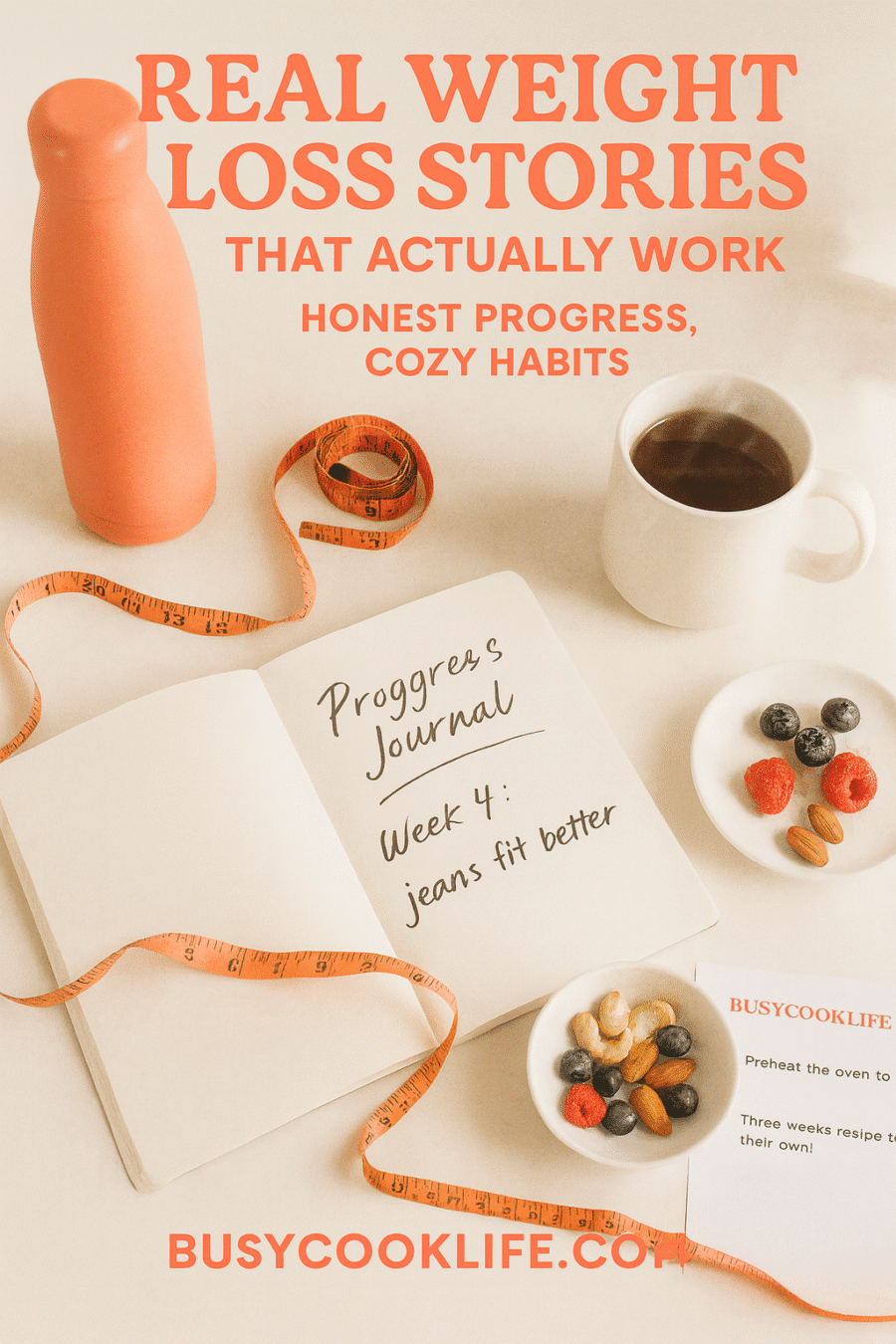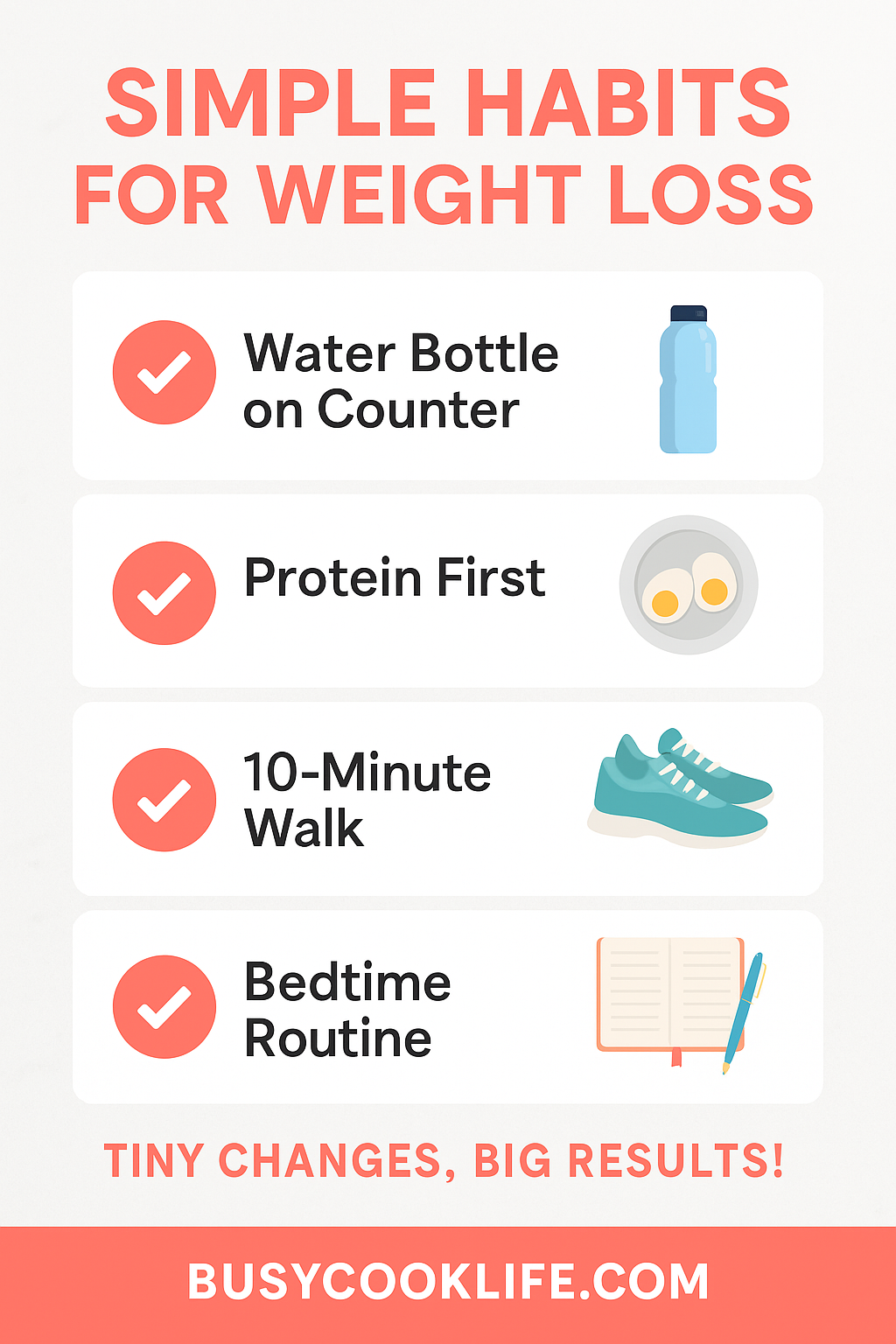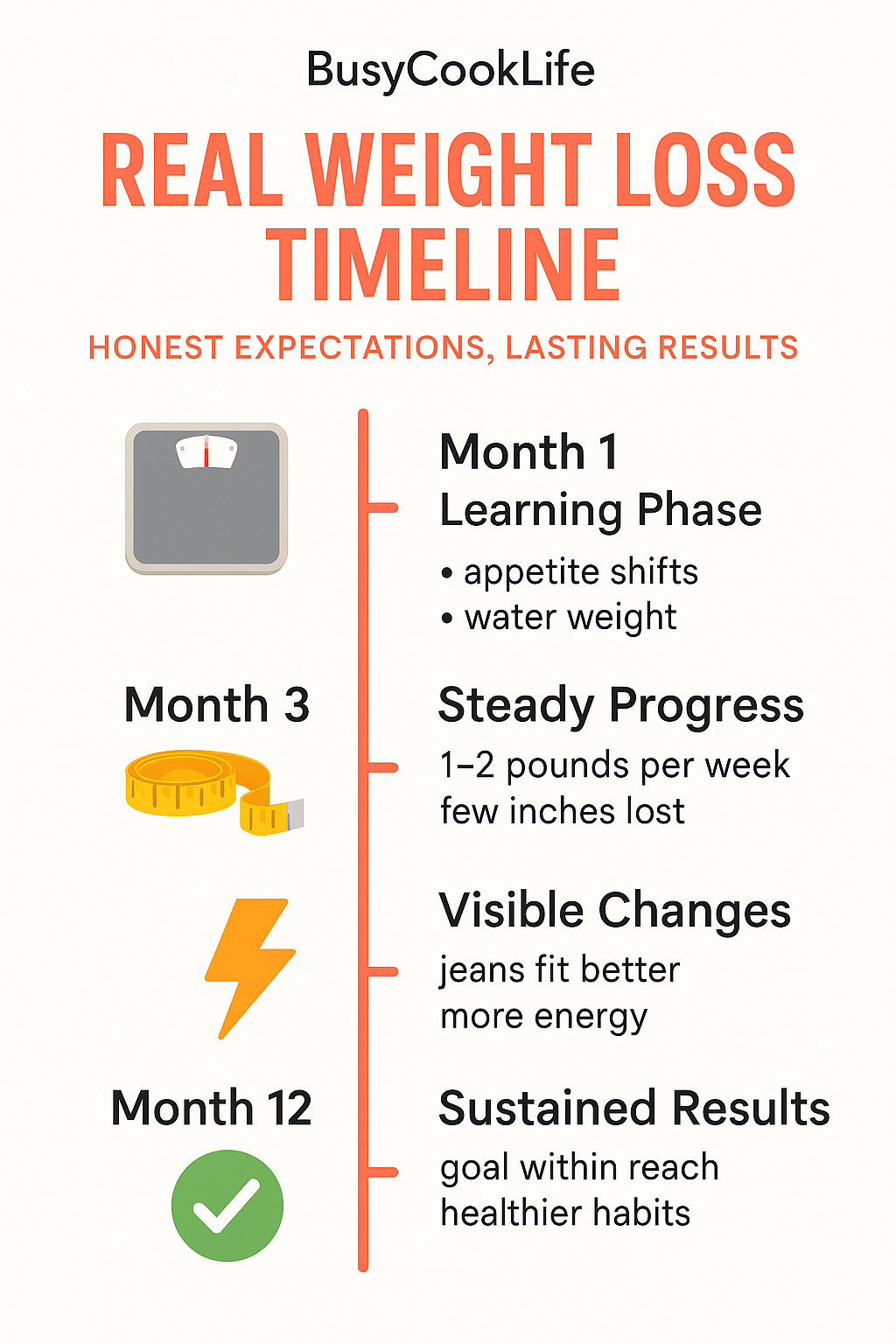I stood in my messy kitchen last night—pasta pot bubbling, a kid asking for snacks, and a sink full of dishes. I wrote because the messy, real days matter more than glossy after photos. This is my honest take.
I share two clear mounjaro weight loss stories here. They got me through plateaus, crazy mom nights, and weeks when the scale barely budged. I say up front: medication helped, but routine, meals, mindset, and small systems mattered just as much.
Quick science: the treatment mimics GLP‑1 and GIP signals, which helps calm appetite and steady blood sugar. That made steady loss feel possible over time. I also gained energy, slept better, and felt cravings ease—wins beyond the scale.
Support kept me steady—texts, simple dinner notes, and tiny habits. I’ll share real numbers, tiny steps you can copy, and cozy kitchen fixes. Later I’ll link a favorite mug recipe and a useful article from the BBC for context: what the research says.
Not medical advice—just my lived experience. So grab reheated coffee, pull on your socks, and settle in. Cozy counts when you want to lose weight and keep going.
Key Takeaways
- Real life beats perfect photos—honest routines help daily progress.
- The medication supports appetite control and steady results when paired with habits.
- Small systems and support make the journey doable for busy people.
- Overall health gains—better sleep and energy—matter as much as scale wins.
- I’ll share practical steps and quick mug meals later for hectic nights.
The cozy truth behind my mounjaro weight loss stories (and why I’m telling them today)
One tired evening — dishes piled, baby shoes underfoot — I felt a small, stubborn shift inside me. My why got louder than my excuses. That moment changed the way I set goals and kept promises.
The night I decided to change: a messy kitchen, cold coffee, and a big why
I jot crumbs and feelings on sticky notes. I chose tiny steps over grand plans. Five-minute meals, ten-minute cleanups, and a gentle bedtime made progress real.
What “honest” means to me: wins, wobbles, and the scale that won’t define us
Honest means I share wins and wobbles. I note the weight I tracked and the loss I refused to chase — like skipping family dinner joy. I use looser jeans and steadier energy as real measures.
So here’s how I do it: simple steps, real talk, and zero perfection pressure
I asked for support early — doctor chats and friend check-ins. I plan simple plates, not strict diets. Success took time, but slow change felt kinder and steadier.
- Small steps every day
- Simple meal lists, sticky notes, and one promise at a time
- Ask for help and lean on support
| Tiny Habit | What I Do | Benefit |
|---|---|---|
| Five-minute meal | Prepped bowl with protein and veg | Quick dinner, less stress |
| Ten-minute cleanup | Surface tidy after kids’ bedtime | Sleeps better, calmer morning |
| Daily sticky note | One small goal listed | Keeps promises and builds momentum |

Where I started: weight, health, and the moment my journey got real
I remember the morning my favorite jeans pinched at the waist and my phone buzzed with lab notes that felt like a nudge. That tiny scene made me stop scrolling and start paying attention to my body. I needed action, not shame.
From tight jeans to blood sugar wake-ups: my baseline and first goals
My labs whispered change:
“Your A1C is higher than we’d like — let’s make a plan.”
I was winded on stairs and carrying recent weight gain after a stressful year. I set plain goals: cook simple dinners more often, walk most days, and figure out what actually fills me up.
Early on I tracked breakfast and snacks after a few blood-sugar wake-ups. That helped me spot patterns instead of blaming my willpower.
- Small checklist: water bottle on the counter, breakfast protein, bedtime routine.
- Start dose was 2.5 mg for a few months while I adjusted.
- Doctor visits focused on control, check-ins, and room to change the plan.
My first honest win? Walking to the mailbox without panting. That tiny step made the whole journey feel real and possible.
For context on the science I read, I kept a research overview handy. And on rough nights I leaned on a simple mug recipe that kept dinner doable.
Mounjaro weight loss stories that kept me going
I found myself jotting down wins on a sticky note after a short walk around the block. Small proof kept me steady.
82 pounds in 16 months — steady dose and steady routine
One person took slow dose increases and showed up daily. Repeatable meals and a simple routine made a big difference. The result: steady loss across months and sustainable habits.
203 pounds in under two years — veggies, lean protein, cravings control
A move from BMI 51.5 to 26.8 came from simple plates and fewer urges to snack. This diet plus gentle exercise changed energy and results.
85 pounds at a 7.5 mg dose — off other meds, labs in range
Stopping other medications and seeing labs normalize gave real motivation. Overall health improved and the success felt tangible.
47 pounds in ~3 months — walking, single-ingredient food
Short walks and unprocessed meals helped fast progress. Joint pain eased and stamina rose—proof that exercise and simple plates work together.
- Try one idea tonight: lean protein at breakfast or a 10-minute post-dinner walk.
- Small supports: grocery lists, water goals, and a sticky note of one promise.
| Result | Time | Key habit |
|---|---|---|
| 82 lbs | 16 months | gradual dose, repeat meals |
| 203 lbs | 1y8m | veggies + lean protein |
| 85 lbs | months | med changes, labs improved |
| 47 lbs | ~3 months | walks, single-ingredient food |
Support, simple food, and steady time on treatment mattered most. Those things helped people lose weight and improve diabetes markers. Pick one small change and try it tonight.
What the first month can really look like (weeks, appetite shifts, and tiny signs of progress)
The first four weeks felt like learning a new recipe—messy, hopeful, and oddly comforting. I started on a 2.5 mg dose and treated the month as practice, not a sprint.
Week-by-week snapshot
- Week 1: New routine. Smaller appetite. Early loss often is water weight.
- Week 2: Same time dosing helps appetite settle. Sweets call less loudly.
- Week 3: Side effects ease. Portions shrink naturally.
- Week 4: Still on starter dose. Check jeans fit—not just the scale.
Why small weekly change still matters
Clinical trials show less than 1% per week at first. That sounds tiny. Over months, steady progress protects energy and mood. Slow adds up.
Quick comforts that helped me
Hydration with lemon calmed headaches. A short walk after dinner beat late snacking. I kept crackers and ginger tea for nausea and sipped all day instead of chugging water.
| Week | Focus | Tip |
|---|---|---|
| 1 | Routine | Plan groceries on weekend |
| 2 | Timing | Same dosing time |
| 3–4 | Comfort | Early bedtime, protein + color + smart carb |

Practical note: If you’re using mounjaro, think months not days. Try a BusyCookLife mug recipe on wild nights—it saved mine more than once.
Side effects I watched for—and the small habits that helped me feel human
Some mornings my stomach felt off and I learned to plan for the quiet days when food sounded like too much trouble. I tracked a few common effects and kept fixes that fit between school drop-offs and conference calls.
Nausea, headaches, bathroom slowdowns: simple fixes that fit busy days
Main things I tracked: nausea, headaches, and bathroom slowdowns. Small changes helped most.
- Hydration tricks: water bottle on the counter, lemon slices, a pinch of salt, and steady sipping all day.
- Bathroom support: berries and oats for fiber, a calm morning walk, and warm tea after dinner.
- Headache helpers: water, regular meals with protein, and ten minutes outside when screens beat me up.
Foods and routines I leaned on when my stomach felt fussy
I ate plain, gentle foods—eggs, rice, yogurt, bananas, and simple soups on rough days. I paused spicy or greasy meals until things settled.
| Issue | Quick fix | Why it helps |
|---|---|---|
| Nausea | Plain rice or toast | Gentle on the stomach |
| Constipation | Oats + berries | Adds fiber, softens stools |
| Headache | Water + protein snack | Stabilizes blood sugar |
Reminder: gain and loss aren’t just numbers. Feeling steady, supported, and able to move a little—short walks and light stretches—kept me consistent. Kindness helped more than strict rules.
Dose, time, and results: how the numbers add up across months
I learned to read the results like a recipe—one careful adjustment and a long, patient simmer. The study data helped me set expectations and stay kind to myself.
What maintenance looks like
Maintenance doses: roughly 5 mg, 10 mg, and 15 mg. Over about 72 weeks the averages reported were ~16% body weight at 5 mg, ~21.4% at 10 mg, and ~22.5% at 15 mg.
Why pace and tolerance matter
Moving up a dose takes time. Titration depends on side effects and daily energy. Staying at a comfortable dose can still deliver solid results—almost everyone in trials lost at least 5% body weight, and that felt like a real win in my house.
- Signals to watch: calmer appetite, fewer snacks, steadier blood sugar.
- Time matters—months of consistent treatment and gentle habits stack into real success.
- If sleep or stress spikes, lost pounds may slow. That’s feedback, not failure.
| Maintenance Dose | Approx. Average Body Weight Change | What I Felt |
|---|---|---|
| 5 mg | ~16% | Smoother appetite, steady gains in energy |
| 10 mg | ~21.4% | Less grazing, clearer meals |
| 15 mg | ~22.5% | Strong results over long term, needs tolerance checks |

I picked my pace with my doctor—listen to side effects, check energy, and protect routine first. My simple check-in list: dose comfort, hunger cues, movement, and bedtime. Tweak one dial at a time and remember: steady beats flashy when you want results that last.
Food, movement, and support: the everyday stuff that multiplies results
I learned to treat dinner like a short recipe, not a production, and that changed my nights.
Simple plate math: protein, color, and easy swaps
Plate rule: protein first, then color, then one smart carb. That combo helps steady appetite and makes meals faster.
I swap Greek yogurt for sour cream, roasted sweet potato for fries, and seltzer with lime when sugar calls. Tiny swaps keep diet real and tasty.
My five favorite “move more without thinking” habits
- Park at the far end of the lot.
- Dance while the microwave runs.
- Take the stairs—twice when I can.
- Five pushups at the sink after brushing teeth.
- Ten-minute walk after meals—school drop-off is perfect.
When I need a quick win: busy mug recipes
On nights I’m out of time I use BusyCookLife.com mug recipes (eggs, oats, or a chocolate protein mug cake). They take five minutes and feel like a hug.
Support matters: group texts, a shared grocery list, and a weekly calendar check keep food and time from fighting each other. Pick one swap and one move today. Celebrate with a cozy mug recipe and share it with a friend—you’ll multiply results faster than you think.
| Focus | Action | Why it helps |
|---|---|---|
| Plate math | Protein + color + smart carb | Reduces sugar cravings, steady energy |
| Movement | Five quick habits | Builds stamina, easier daily tasks |
| Support | Texts + grocery runs | Less friction, more success |

When progress stalls: plateaus, patience, and finding your next tiny step
There were weeks the scale barely budged, so I focused on the small dials I could control. Plateaus happen. They don’t mean failure—just a chance to tweak the basics.
Check the dials: sleep, stress, fiber, fluids, and dose discussions
I start with sleep and stress. Better sleep and a short wind‑down often restore appetite cues and calm cravings.
I scan fiber and fluids next—berries, beans, leafy greens, and steady water. Those fixes help digestion and steady appetite fast.
I tighten my walking habit—ten minutes after meals adds up. I also throw in two‑minute strength bursts while the microwave hums.
- I look for diet creep—extra snacks or bigger portions—and bring back a protein‑first plate.
- I save dose talks for my provider until I’ve tidied basics—so I’m not skipping easy wins.
- I set one tiny seven‑day goal: earlier bedtime, an extra cup of water, or veggies at lunch.
| Dial | Quick fix | Why it helps |
|---|---|---|
| Sleep & Stress | Wind‑down routine | Better appetite signals |
| Fiber & Fluids | Berries, beans, water | Digestion and fullness |
| Movement | 10‑minute walk | Burns a bit and lifts mood |
Tip: if you want a quick read on plateau troubleshooting, try this plateau troubleshooting guide for practical steps.
Small gains teach what to tweak next. Text a friend, ask for a recipe, or walk together. Success usually returns when you lead with patience and one doable step.

Conclusion
I sat with a mug and a short list of doable steps, and that list kept me moving. This piece wraps real meals, small systems, and steady weight loss into one kind plan.
Big‑picture: months of gentle treatment and routine change — plus appetite calm from the medication — add up to real results. Some people see big shifts in body weight and blood sugar over time; others gain better mobility and mood.
Side effects are manageable with simple fixes, and your provider can help pick a dose and timeline that fits your life. Try one tiny step now — fill a water bottle, prep a protein, or make a mug recipe from BusyCookLife.com — and give yourself a cozy, patient path forward.
From Asheville — kitchen lights low, sink almost empty, heart full. You can do this your way, one warm step at a time.
FAQ
What should I expect in the first month using Mounjaro for weight and blood sugar?
In month one you’ll likely see appetite shifts, some water-weight changes, and a few uncomfortable days as your body adjusts. Expect mild nausea or headaches for a week or two for some people. Tiny wins matter — better portion control, fewer cravings, and steadier blood sugar readings are early signs progress is happening.
How fast is healthy progress—should I expect big weekly results?
Fast drops aren’t the goal. A steady pace — often under 1% of body weight per week — protects muscle and keeps labs stable. Over months, that adds up. I found gradual reductions felt more sustainable and kinder to my joints and energy.
What side effects are common and how can I manage them during busy days?
Nausea, headaches, and slower bowel movements come up for some folks. Simple fixes helped me: smaller meals, ginger tea for queasiness, staying hydrated, and fiber-rich foods to ease digestion. Resting when tired and spacing doses with food if advised by my clinician also made a big difference.
How do doses relate to results and what are typical maintenance levels?
Doses vary — many follow 2.5 mg starts and work up. Maintenance often sits around 5, 10, or 15 mg depending on goals and tolerance. Studies show larger doses can yield greater percent reductions over time, but personal pace and side effects guide what’s right for you.
Can this treatment help people with type 2 diabetes control blood sugar too?
Yes — lots of folks see improved glucose control alongside body changes. I tracked fasting numbers and A1c with my provider and adjusted meds as needed. Always coordinate with your care team before changing anything for diabetes.
What foods and routines helped me the most when appetite or stomach felt off?
I leaned on single-ingredient foods, simple proteins, and gentle carbs — eggs, yogurt, roasted veggies, and quick grain bowls. Small, frequent meals and sipping fluids helped nausea. I also kept easy snacks on hand so I didn’t binge when hunger returned.
How do I combine movement and busy life without overcomplicating things?
Short, regular moves beat long, rare workouts. My five easy habits: walking after meals, parking farther away, two-minute calf raises during coffee, a quick bodyweight circuit while dinner cooks, and taking stairs. They add up without stealing time.
What if progress stalls — how do I troubleshoot a plateau?
First, check sleep, stress, fiber intake, fluids, and consistency. Small tweaks often help — up protein, track portions for a week, or add extra daily steps. If it’s persistent, talk to your clinician about dose or med interactions before making big changes.
Are there long-term benefits beyond pounds lost?
Many people report better energy, less joint pain, improved glucose labs, and easier daily movement. For me, the biggest win was simple — clothes fit better and I felt more like myself. Labs and overall health markers are worth tracking with your provider.
Is it normal to need support—how did I stay motivated?
Totally normal. I leaned on a small support crew — a clinician, a friend for walk dates, and online recipe hubs like BusyCookLife.com for quick meals. Celebrating tiny wins kept me going more than waiting for big milestones.

